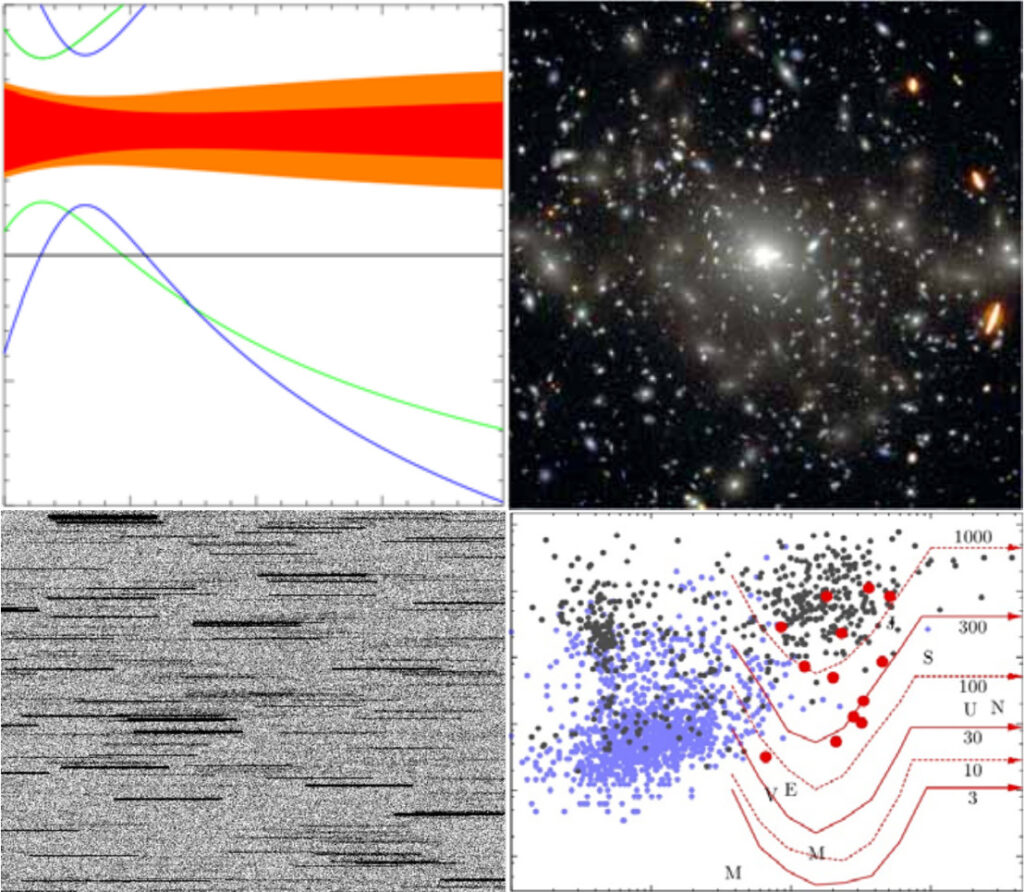Euclid Science
Extremely hot and dense initially, the Universe swelled, gradually taking the form of a gigantic cosmic web made of filaments of matter surrounding large empty bubbles. This transformation was largely orchestrated by the force of gravitation. The latter, responsible for the universal attraction of bodies, should normally lead to a slowing of the expansion of the Universe. On the contrary, this expansion is accelerating! For what reason(s)? This is up to Euclid to reveal it!
The formation and evolution of structure in our Universe are governed by its ‘dark’ ingredients. Most material in the Universe is dark matter, which does not interact with photons and can only be detected by its gravitational pull. Dark matter determines the formation of structures like galaxies and galaxy clusters. Moreover, the accelerated expansion of the Universe is attributed to a mysterious ‘dark energy’, which makes up almost three-quarters of the energy-matter budget. Although all observations point to the existence of such dark constituents, their nature remains a great mystery.
ESA’s Euclid space telescope is the biggest step forward towards solving this fundamental problem in physics: it is designed to reveal the nature of the dark constituents, as well as of gravity itself, by measuring with unprecedented precision the growth of structure over most of cosmic time. To do so, it will collect high-quality images at optical and near-infrared wavelengths of about two billion galaxies and measure emission-line redshifts for tens of millions of galaxies. The full survey data will comprise hundreds of thousands of images and occupy several tens of Petabytes. Combined with complementary ground-based images, these data will enable an unprecedented study of the dark universe while providing a rich data set with a tremendous legacy value.

Core science: Cosmology
Euclid as a mission has been developed and designed for these cosmology measurements. How does the software that the EC is developing turn images into cosmology knowledge? Read about the technology and physics behind Euclid’s Core Science.
Legacy Science: from asteroids to black holes
Euclid will observe more than a third of the full sky in an unprecedented combination of area, depth, and resolution. This enables a long list of science studies that are not directly or not at all related to cosmology. Read more about Euclid’s Legacy Science from asteroids, to galaxies, to distant black holes.
